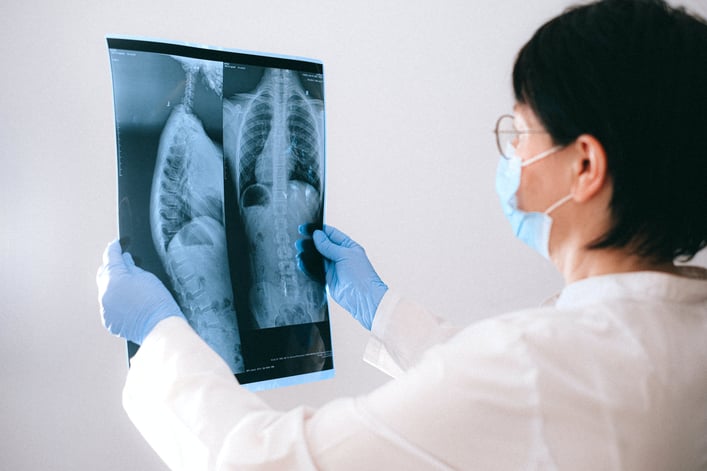
Blog
Your Guide to COPD (Chronic obstructive pulmonary disease): Causes, symptoms & how clinical research can help

AUTHOR
Olivia Ustariz
Date Published
03 November 2023
Overview
Being able to take big, deep breaths is important to our overall well-being, as it can promote relaxation, increase oxygen intake, and subsequently improve our mood and physical performance. However, for people living with COPD (Chronic obstructive pulmonary disease), a chronic lung condition that causes restricted airflow, this simple act can become a daily challenge, thereby affecting their quality of life. While there is no cure for COPD, researchers are working hard to uncover more about this condition and pioneer potentially ground-breaking treatments. In this blog post, we will explore the world of COPD and discuss an exciting clinical trial striving to advance COPD care and bring hope to people living with this condition.
What is COPD?
COPD (Chronic obstructive pulmonary disease) refers to a group of lung conditions that cause restricted airflow and make it difficult to breathe. The two main types of COPD are:
- Chronic bronchitis: Chronic bronchitis refers to long-term inflammation of the bronchi, the two large tubes that carry air from the trachea (windpipe) to the lungs. The bronchi are also responsible for protecting the lungs from possible infection or injury, as they produce mucus that traps and removes foreign particles and pathogens from the air.
- Emphysema: Emphysema refers to a progressive lung disease in which the alveoli (air sacs) are damaged and enlarged beyond repair. The alveoli are responsible for exchanging oxygen from inhaled air with carbon dioxide from the blood, thereby supplying the body with oxygen while removing waste gases. The enlargement of alveoli, as in emphysema, creates a loss of surface area for the efficient exchange of oxygen and carbon dioxide and can make it harder to breathe.
Causes
COPD can be attributed to a variety of risk factors that impact the lungs and airways, including:
- Smoking - Cigarette smoking is the leading cause of COPD, as it introduces harmful chemicals and irritants into the lungs that trigger inflammation, damage the airways, and reduce lung function over time.
- Prolonged exposure to chemical fumes, vapours, and dusts in the workplace.
- Prolonged exposure to other lung irritants, such as second-hand smoke, pipe smoke, and air pollution. Air pollution can include particulate matter, carbon monoxide, and other noxious gases in the atmosphere.
- Indoor air pollution - For instance, exposure to fumes from burning biomass or coal for cooking and heating in poorly ventilated homes. This is more common in low to middle-income countries.
- Genetic factors - In some cases, genetic factors can make a person more susceptible to developing COPD, such as alpha-1 antitrypsin deficiency.
- Asthma - Asthma may be a risk factor for developing COPD, as it can inflame and damage the airways, thereby making them more susceptible to other respiratory conditions.

Symptoms
Though the symptoms of COPD can vary from person to person, they tend to include:
- Shortness of breath, especially during physical activity.
- Wheezing.
- Chest tightness.
- A persistent cough that produces phlegm.
- Frequent chest infections.
AS COPD is a progressive illness, these symptoms generally do not appear until after the lungs have sustained significant damage and get worse over time to potentially include:
- Fatigue or lack of energy.
- Swelling in the ankles, feet, or legs from a build-up of fluid (oedema).
- Unintended weight loss.
- Chest pain and coughing up blood.
Diagnosis & treatment
COPD is commonly misdiagnosed, as its symptoms overlap with those of several other lung conditions. As such, if you experience ongoing symptoms of COPD, you should visit your GP for a formal diagnosis, which may include:
- Questions about your symptoms, smoking history, and whether you have a family history of lung problems.
- Using a stethoscope to examine your chest and listen to your breathing.
- A spirometry test, wherein you breathe into a machine called a spirometer to measure how much air you can exhale in a single forced breath.
Currently, there is no cure for COPD. Though, there are some treatment options available that can help people manage their symptoms, slow the progression of the disease, and improve their quality of life, including:
- Quitting smoking.
- Medications, such as bronchodilators, steroids, and antibiotics, which can help open the airways, reduce lung inflammation, and treat bacterial infections, respectively.
- Pulmonary rehabilitation, a structured program involving exercise, breathing techniques, and education that can help people with COPD increase their capacity for exercise, reduce breathlessness, and improve their daily life.
- Oxygen therapy, which may be recommended when a person’s blood oxygen levels are consistently low.
- Surgery: People with severe cases of COPD may need to undergo surgery to remove damaged lung tissue or receive a lung transplant.
How clinical research can help
As you can see, COPD presents unique challenges when it comes to treatment options, in that patients must work closely with their healthcare team and follow a comprehensive regimen of medication, rehabilitation, and lifestyle changes to manage their condition.
As such, clinical trials provide an exciting avenue to improve our understanding of COPD, its causes, and to ultimately find more effective treatment options. At time of writing, we are currently recruiting for a clinical trial investigating a potential new treatment for COPD.
By participating in this clinical trial, you could not only change the course of your own healthcare journey, but also contribute to potentially ground-breaking therapies that benefit the broader COPD community.
To find out more about this study, and other respiratory studies we are currently recruiting for, view our active trials.